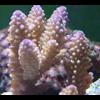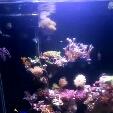-
Topics
-
Latest Update
-
1
-
0
wtb nudibranch
anyone have spare nudi to give away or selling ? im looking 5 pcs of them Sent from my 22031116BG using Tapatalk -
0
EXTRAWD - Agen Slot88 Terpercaya Paling Menguntungkan
KLIK LINK GACOR DI BAWAH INI LINK LOGIN DISINI LINK DAFTAR DISINI LINK ALTERNATIF DISINI Slot88 merupakan salah satu brand provider gaming yang ada di Indonesia, gamenya bisa dengan mudah ditemukan di sebuah website taruhan. Namun jika ingin produk dan pilihan permainannya banyak, maka Anda dapat menemukannya di sebuah situs taruhan resmi. Maksud dari resmi disini adalah nanti fasilitas dan fitur bermain yang dihadirkan akan sangat banyak, membantu pemain mendapatkan kemudahan taruhan yang lebih mudah. Pun tentu saja kemudahan memenangkan permainannya lebih gampang. Nah, pada kesempatan kali ini akan dibahas lengkap terkait dengan bagaimana keuntungan dan apa saja kelebihan jika slot dari provider Slot88 dimainkan di sebuah agen lokal terpercaya. Pun tentu saja situs terbaru, yang hadir memberikan layanannya di tahun 2024 secara baru. Untuk informasi lengkap tentang menguntungkannya bagaimana, yuk langsung simak penjelasan berikutnya. Jika nanti Anda tertarik karena sumber keuntungan tersebut dan tawaran kelebihannya, maka bisa langsung membuat akun taruhan baru. Permainan slot sangatlah menguntungkan, namun tentu akan menguntungkan dengan beberapa catatan tertentu. Salah satunya adalah games diakses berkualitas, dimainkan di sebuah agen terpercaya yaitu EXTRAWD. Serta produk game slotnya menguntungkan dan aman dimainkan seperti dari Slot88. Kelebihan Bermain Slot88 di Agen Slot Online EXTRAWD Penting untuk diketahui terlebih dahulu, bahwa pada dasarnya tingkat pencarian terhadap permainan slot online di dunia sangatlah tinggi. Pun hal tersebut berlaku juga di Indonesia, yang notabene kita tahu seperti apa regulasi serta ketentuan berlaku mengenai permainan taruhan di Indonesia. Hal tersebut diperjelas dengan banyaknya pilihan agen situs taruhan, sebagai website sekaligus media bisa digunakan sebagai tempat untuk bermain. Namun di samping hal tersebut, pemain harus pintar memilah juga memilih brand situs taruhannya. Karena persaingannya ketat, tingkat pencarian terhadap website sangat tinggi. Yang dikhawatirkan akan terjebak dalam penggunaan agen palsu, dan tentu saja jika demikian terjadi Anda akan menanggung kerugiannya. Nah, oleh karena hal tersebut maka usahakan untuk dapat bergabung di sebuah situs terpercaya serta berpengalaman. Karena beberapa keuntungannya ketika bermain Slot88 akan didapatkan, apa saja? Bonus terbanyak Kelebihan pertama yang bisa dirasakan dan didapatkan oleh seorang pemain, termasuk Anda sendiri saat memainkan Slot88 di website terpercaya. Adalah tersedianya layanan bermain selama 24 jam, tanpa adanya keterbatasan waktu khusus. Jadi, nanti bermainnya bisa memilih di waktu 24 jam. Untuk berkomunikasi dengan admin pun demikian, layanannya selalu siap memberikan bantuan melalui fitur live chat yang disediakan. Penyediaan Banyak Bonus Berikutnya, pemain berhak mendapatkan keuntungan tidak hanya sekedar dari mengalahkan permainan slotnya saja. Namun juga berkesempatan banyak mendapatkan komisi bonus yang dihadirkan oleh pengelola, atau admin. Bonus yang dihadirkan juga beragam, dimana pemain berhak mendapatkan bonus new member atau bagi member baru. Bonus referral, bonus deposit, bonus freebet, atau bahkan bonus-bonus bulanan hingga mingguan yang pasti menguntungkan bagi pemain. Semua bonusnya berhak didapatkan oleh semua player, dan semua komisinya juga berhak diklaim. Selama syarat serta ketentuan klaim terpenuhi dengan baik, maka player dipastikan berhak mendapatkan komisinya secara real. Akses Transaksi Mudah Ya, kemudahan transaksi untuk bermain Slot88 sangat terjamin. Dimana pemain bisa merasakannya lewat metode transaksi yang disediakan sangat lengkap. Dimana pengelolanya menghadirkan metode menggunakan rekening, menggunakan e-wallet serta dipersilahkan menggunakan pulsa. Kemudahan ini tentu saja memberikan akses kepada pemain yang tidak memiliki salah satu metode dan bisa menjadikan metode lain sebagai alternatif. Website Fleksibel dan Mudah Digunakan Kemudahan ini didukung dengan desain website sangat sederhana, namun tetap mewah ketika digunakan. Dan maksudnya adalah tampak lebih wah, atau lebih profesional saat dikunjungi. Untuk beberapa menit, opsi juga fungsi layanannya juga mudah ditemukan. Hal ini sebagai salah satu bentuk layanan terbaik, dan keunggulan bagi siapa saja yang menggunakannya. Termasuk pemula.Keamanan Terjamin Penting untuk diperhatikan, bahwa keamanan nyatanya jadi salah satu hal penting di dalam aktivitas taruhan pada agen lokal. Keamanan akan buat taruhan jadi lebih aman, lebih untung dan tentu saja konsentrasi bermain bisa lebih baik. Sistem keamanan dihadirkan oleh situs terpercaya sangat baik, mencakup keamanan website. Keamanan pemain, serta keamanan dana yang digunakan oleh player untuk bermain taruhan. -
0
EXTRAWD - Agen Slot Gacor Terpercaya Paling Menguntungkan
KLIK LINK GACOR DI BAWAH INI LINK LOGIN DISINI LINK DAFTAR DISINI LINK ALTERNATIF DISINI Permainan slot sangatlah menguntungkan, namun tentu akan menguntungkan dengan beberapa catatan tertentu. Salah satunya adalah games diakses berkualitas, dimainkan di sebuah agen terpercaya yaitu EXTRAWD. Serta produk game slotnya menguntungkan dan aman dimainkan seperti dari Slot88. Slot88 merupakan salah satu brand provider gaming yang ada di Indonesia, gamenya bisa dengan mudah ditemukan di sebuah website taruhan. Namun jika ingin produk dan pilihan permainannya banyak, maka Anda dapat menemukannya di sebuah situs taruhan resmi. Maksud dari resmi disini adalah nanti fasilitas dan fitur bermain yang dihadirkan akan sangat banyak, membantu pemain mendapatkan kemudahan taruhan yang lebih mudah. Pun tentu saja kemudahan memenangkan permainannya lebih gampang. Nah, pada kesempatan kali ini akan dibahas lengkap terkait dengan bagaimana keuntungan dan apa saja kelebihan jika slot dari provider Slot88 dimainkan di sebuah agen lokal terpercaya. Pun tentu saja situs terbaru, yang hadir memberikan layanannya di tahun 2024 secara baru. Untuk informasi lengkap tentang menguntungkannya bagaimana, yuk langsung simak penjelasan berikutnya. Jika nanti Anda tertarik karena sumber keuntungan tersebut dan tawaran kelebihannya, maka bisa langsung membuat akun taruhan baru. Kelebihan Bermain Slot88 di Agen Slot Online EXTRAWD Penting untuk diketahui terlebih dahulu, bahwa pada dasarnya tingkat pencarian terhadap permainan slot online di dunia sangatlah tinggi. Pun hal tersebut berlaku juga di Indonesia, yang notabene kita tahu seperti apa regulasi serta ketentuan berlaku mengenai permainan taruhan di Indonesia. Hal tersebut diperjelas dengan banyaknya pilihan agen situs taruhan, sebagai website sekaligus media bisa digunakan sebagai tempat untuk bermain. Namun di samping hal tersebut, pemain harus pintar memilah juga memilih brand situs taruhannya. Karena persaingannya ketat, tingkat pencarian terhadap website sangat tinggi. Yang dikhawatirkan akan terjebak dalam penggunaan agen palsu, dan tentu saja jika demikian terjadi Anda akan menanggung kerugiannya. Nah, oleh karena hal tersebut maka usahakan untuk dapat bergabung di sebuah situs terpercaya serta berpengalaman. Karena beberapa keuntungannya ketika bermain Slot88 akan didapatkan, apa saja? Bonus terbanyak Kelebihan pertama yang bisa dirasakan dan didapatkan oleh seorang pemain, termasuk Anda sendiri saat memainkan Slot88 di website terpercaya. Adalah tersedianya layanan bermain selama 24 jam, tanpa adanya keterbatasan waktu khusus. Jadi, nanti bermainnya bisa memilih di waktu 24 jam. Untuk berkomunikasi dengan admin pun demikian, layanannya selalu siap memberikan bantuan melalui fitur live chat yang disediakan. Penyediaan Banyak Bonus Berikutnya, pemain berhak mendapatkan keuntungan tidak hanya sekedar dari mengalahkan permainan slotnya saja. Namun juga berkesempatan banyak mendapatkan komisi bonus yang dihadirkan oleh pengelola, atau admin. Bonus yang dihadirkan juga beragam, dimana pemain berhak mendapatkan bonus new member atau bagi member baru. Bonus referral, bonus deposit, bonus freebet, atau bahkan bonus-bonus bulanan hingga mingguan yang pasti menguntungkan bagi pemain. Semua bonusnya berhak didapatkan oleh semua player, dan semua komisinya juga berhak diklaim. Selama syarat serta ketentuan klaim terpenuhi dengan baik, maka player dipastikan berhak mendapatkan komisinya secara real. Akses Transaksi Mudah Ya, kemudahan transaksi untuk bermain Slot88 sangat terjamin. Dimana pemain bisa merasakannya lewat metode transaksi yang disediakan sangat lengkap. Dimana pengelolanya menghadirkan metode menggunakan rekening, menggunakan e-wallet serta dipersilahkan menggunakan pulsa. Kemudahan ini tentu saja memberikan akses kepada pemain yang tidak memiliki salah satu metode dan bisa menjadikan metode lain sebagai alternatif. Website Fleksibel dan Mudah Digunakan Kemudahan ini didukung dengan desain website sangat sederhana, namun tetap mewah ketika digunakan. Dan maksudnya adalah tampak lebih wah, atau lebih profesional saat dikunjungi. Untuk beberapa menit, opsi juga fungsi layanannya juga mudah ditemukan. Hal ini sebagai salah satu bentuk layanan terbaik, dan keunggulan bagi siapa saja yang menggunakannya. Termasuk pemula.Keamanan Terjamin Penting untuk diperhatikan, bahwa keamanan nyatanya jadi salah satu hal penting di dalam aktivitas taruhan pada agen lokal. Keamanan akan buat taruhan jadi lebih aman, lebih untung dan tentu saja konsentrasi bermain bisa lebih baik. Sistem keamanan dihadirkan oleh situs terpercaya sangat baik, mencakup keamanan website. Keamanan pemain, serta keamanan dana yang digunakan oleh player untuk bermain taruhan. Sistem aman dan terpercaya dengan proteksi akun kuat Nah, kelebihan satu ini nampaknya jadi salah satu kelebihan yang paling banyak dinantikan. Dimana pemainnya berhak mendapatkan akses bermain yang murah, terjangkau atau tidak mahal. Murahnya akses melakukan deposit memang subjektif, namun jika minimal depositnya minimal kurang dari 5 Ribu Rupiah. Apakah akan Anda sebut mahal? Jelas sangat murah bukan? Banyak Games Disediakan Selain permainan slot, dan selain permainan slot dari Slot88. Secara resmi Anda pun berhak memainkan permainan casino lain, selain slot juga selain provider Slot88. Permainan casino yang bisa ditemukan dari agen lokal 2024 terpercaya dan berpengalaman, adalah roulette online. Kemudian permainan sicbo online, permainan Dragon Tiger, atau beberapa jenis permainan casino online lainnya. Begitu juga dengan providernya, Slot88 tidak menjadi satu-satunya brand provider gaming yang bisa Anda akses juga mainkan. Tersedia Tutorial Bermain Jika merasa kebingungan dengan aturan main dari games yang akan dimainkan, termasuk produk game slot dari Slot88. Maka Anda sebagai pemainnya tidak perlu khawatir, sebab pengelola secara gratis dan mudah menyediakan tutorial bermain. Yang bisa diakses kapan saja, sesuai kebutuhan selama 24 jam sesuai keinginan. Penyediaan Apps Mobile Gratis Nanti bermain slotnya tidak hanya bisa Anda lakukan menggunakan website atau dengan mode desktop saja. Namun juga bisa diakses menggunakan mobile apps, yang dapat dimainkan lebih praktis juga lebih modern. Hadir Link Alternatif Sistem keamanan yang tadi sudah disebutkan, didukung dengan sistem layanan link alternatif. Sebuah tautan kedua, atau cadangan yang secara resmi dihadirkan oleh pengelola. Tujuan serta fungsi utamanya, adalah memberikan akses bagi pemain, walaupun website utamanya sedang error. Disediakan Testimoni Jika ragu dengan kredibilitas websitenya, maka tidak perlu ragu. Jika ternyata nanti Anda meragukan terkait dengan kredibilitas websitenya, maka pastikan untuk bisa melihat sajian data testimoni yang dihadirkan pengelola Daftar Gampang Lalu kelebihan terakhir yang dihadirkan oleh situs penyedia games Slot88 online lokal terpercaya, adalah akses daftar yang super gampang. Dengannya, pemain bisa dengan mudah juga gampang saat proses registrasi dilakukan secara cepat. Nah, apakah Anda tertarik untuk bergabung di agen resmi dan memainkan slot dari Slot88 di EXTRAWD? Jika demikian terjadi, maka Anda bisa segera mendaftarkan diri jadi member di situsnya. Bekal untuk jadi member di situs tersebut mudah, calon pemain Slot88 tinggal mempersiapkan rekening bank. Kemudian username, kata sandi, nomor HP, hingga kode referral jika teman Anda memilikinya. Dengan ketentuan, kelebihan, data sebagai syarat untuk memberikan taruhan online di atas. Maka Anda bisa segera gabung dengan agen lokal Slot88 terpercaya, sehingga nanti bisa jadi member resminya.- wrasse
- yuma bicolor
-
(and 1 more)
Tagged with:
-
0
wts zoas
omega zoas petroglyphs mind tricks gmk utter chaos xc illusionist magician selling these frags pm if interested or whatsapp 88604964
-







Recommended Posts
Join the conversation
You can post now and register later. If you have an account, sign in now to post with your account.